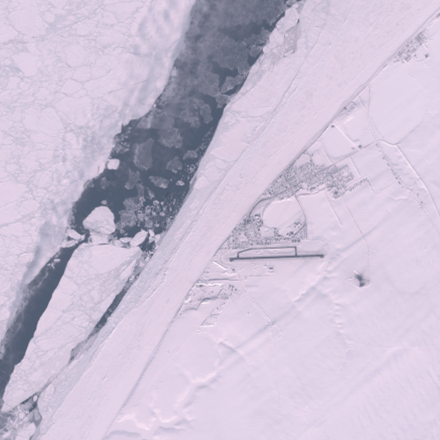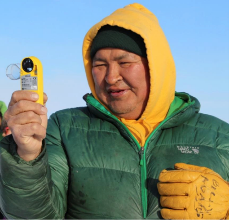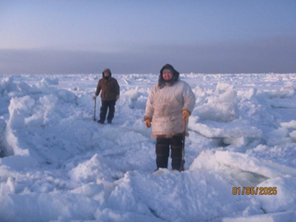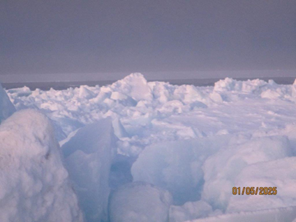Coastal Ice Knowledge and Conditions

The Arctic Pacific Infrastructure for Supporting Continuous Engineering and Science (Arctic PISCES) project relies on Iñupiaq traditional environmental ice knowledge to understand historical and present ice conditions. Coastal ice radar observations will also be used to determine current conditions at specific locations. (https://seaice.alaska.edu/coastal-ice-observations/utqiagvik/)
Local Observations
Indigeneous ice experts who are part of the Alaska Arctic Observatory and Knowledge Hub (https://arctic-aok.org/) contribute a wealth of Traditional Environmental knowledge and experience. Below is an example of a first-hand report for the 2025 field season, contributed by A-OK observer Billy Adams that provides depth and context for understanding the local ice and weather conditions.
Alaska Arctic Observatory and Knowledge Hub - Reported by Billy Adams

“On January 6, 2025, the weekend weather was negative 12 degrees Fahrenheit, northeast winds 5-10 miles-per-hour (mph), clear, and the ocean surface currents were from the north going south at about 1-2 mph or comparable to a slow walk.
The trail making was tough the first couple of days then after a few days of soreness your body starts to toughen up and trail making gets a little easier—a month later, you are ready to fight world champion fighters.
We stopped two miles from the United States Airforce hangar near the Naval Arctic Research Laboratory, just 100 yards more yard reaches the lead edge. There were no visible ridges for safety in the area and we crossed muġalik about 3/4 of the way out due to the dangers of potential ice breaking off. Hoping a strong westerly wind can clean it out of dangers or make ridges in the next few weeks to make it a safer place.”


Punching a trail through rough ice towards open water at the lead edge in early January 2025. Photo courtesy of Billy Adams.